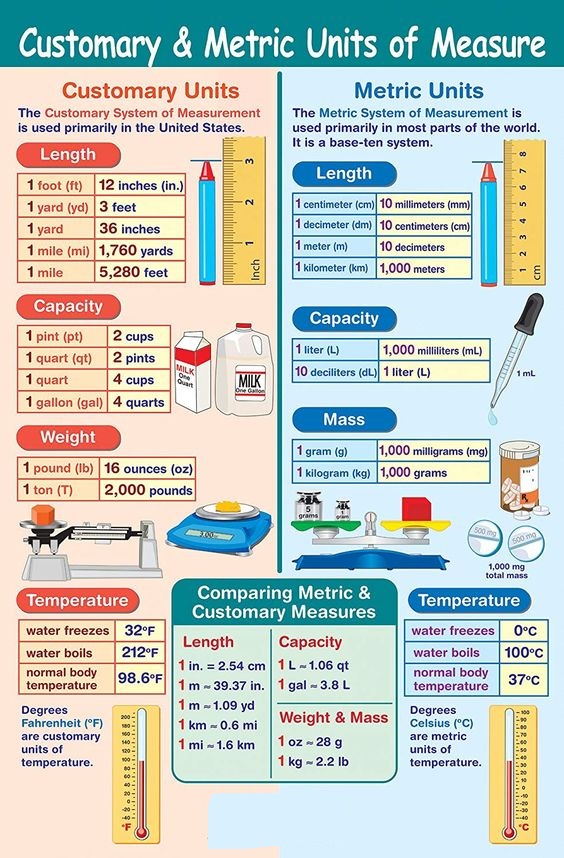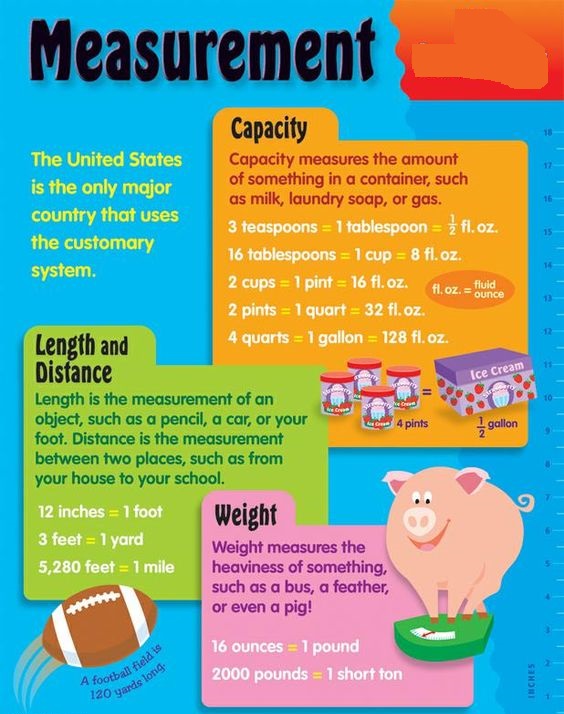Units of Measurement: There are various units of measurement present in the world. We use a unit of measurement for measuring everything starting from length to time. It is very essential to keep a method of measurement and hence there are different units for different things. There are units of measurement list in maths, units of measurement in physics, etc. It becomes quite difficult to memorize all the units together since each of them has its own scientific definition including the SI Unit of Measurement. For this sole purpose, we have jotted down a list of units of measurement for your convenience.
List of Units of Measurement
Names of Units of Measurement
Description of Units of Measurement given on the list
SI Units of Measurement
Kilogram is the original basic unit of mass and belongs to the metric system. The mass of 1,000 cubic cm of water is approximately equal to one kilogram. Previously, the equivalence used to be exactly the same. It is widely used in the science, commerce, and engineering world for measurement.
For measuring the amount of electric change within motion per unit time, Ampere is used. In the International System of Units, the base unit of electric current is Ampere. It is denoted by amp and is named after the French mathematician and physicist, André-Marie Ampère.
Joule is usually defined as the unit of energy or work in the International System of Units. It is equivalent to the work covered by a force of 1 newton through a meter. The Joule is named after James Prescott Joule, an English physicist. It is equal to 10⁷ ergs.
Kelvin is a very widespread unit of measuring primarily, temperature in science. It is generally denoted by the letter K in Capital, beside the actual determined value of the temperature. It is the Base unit in the SI system of Units in science; and is related directly with Kinetic energy.
The SI unit of luminous intensity is measured by candela. It is used for measuring the visual intensity of different light sources, like torch bulbs and light bulbs. Among the other SI based units, candela is the only unit that is based on the perception of human.
A second is described to being equivalent to the duration of time of 9,192,631,770 period of the radiation that is corresponding to the transition within the two hyperfine levels that belongs to the fundamental unperturbed ground-state of the caesium-133 atom.
General Units of Measurement
Pascal refers to a pressure of 1 newton for per square meter. In SI base units, pascal is 1 kilogram for per meter per second squared. It is denoted by the symbol of Pa. More than pascal, the kilopascal of 1,000 newtons for per square meter is used more frequently.
Newton is identified as the absolute unit of force within the International System of Units. The abbreviation of this unit is N. It is described as the necessary force which is required for providing a mass of 1 kilogram along with an acceleration of 1 meter per second.
Watt is an unit of power. It is within the International System of Units and is equivalent to 1 Joule of work that is performed per second. It is also equal to 1/746 horsepower. Mostly all the electronic devices are rated using the unit of watt.
Liter, also spelled as litre is a unit of volume found in the metric system. It is equal to 1 cubic decimeter and also 0.001 cubic meter. During 1901 to 1964, a liter can be recognized as the volume of 1 kilogram of pure water at 4 °C.
The milimeter is also spelled as millimetre and is a unit of length within the metric system. It is equivalent to 1/1000 of a meter, that is, the SI base unit of length. The symbol used for denoting a millimeter is mm.
Yard refers to a unit of length. It is equal to 36 inches. The standard length for arrows is also recognized as yard. A yard is denoted with the symbol of yd. It is slightly lesser than 1 meter.
Parsec is identified as a unit to express distances between galaxies and stars. This unit is used by astronomers and also represents the distance at which the orbit of the Earth subtends an angle of a second of arc.
Meter is recognized as the Internal System of Units. It is the unit of length and displacement. The distance traveled by a ray of electromagnetic energy within a vacuum in 1/299,792,458 of a second is a single meter.
Kilometer is also spelled as kilometre and is a unit of length. A kilometer is equal to 1,000 meters and can also be denoted as km. It is very commonly used for measuring distance and is equal to 0.621 miles.
Centimeter refers to a metric unit of measurement. It is used for measuring a certain object’s length. It is denoted as cm. This term centimeter was coined in the year of 1801. A centimeter is a 1/100’th of a meter.


